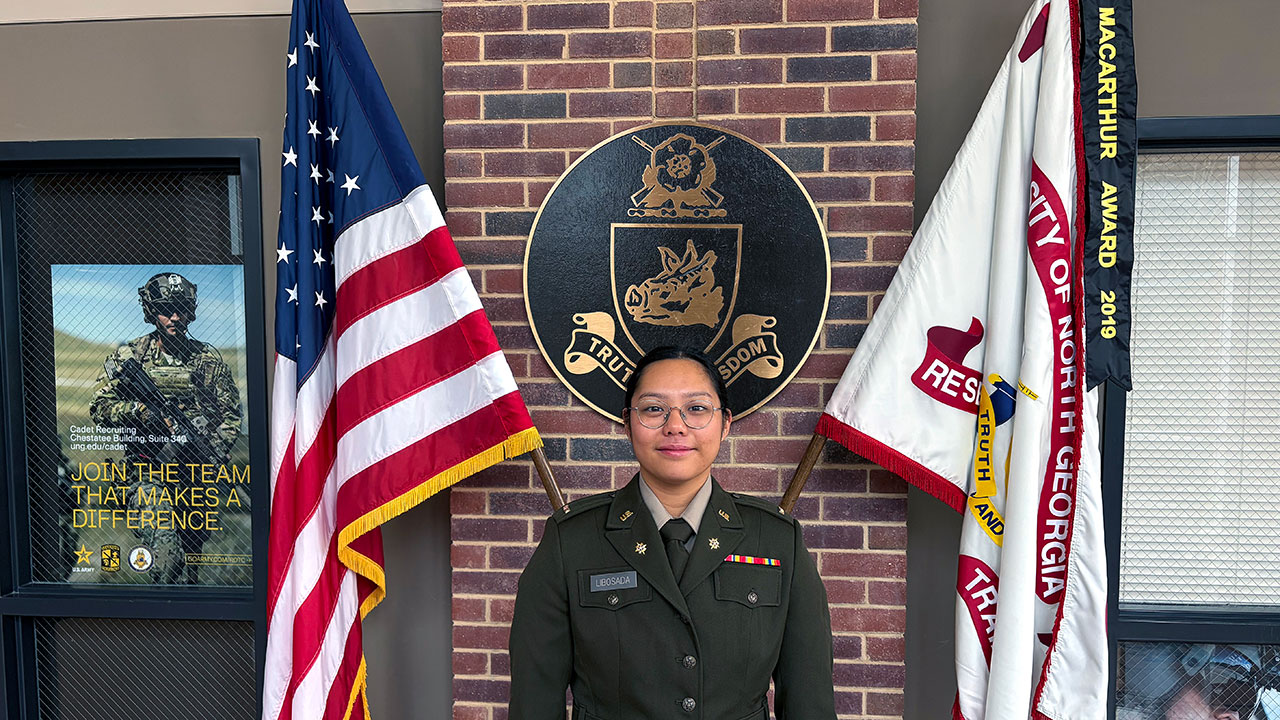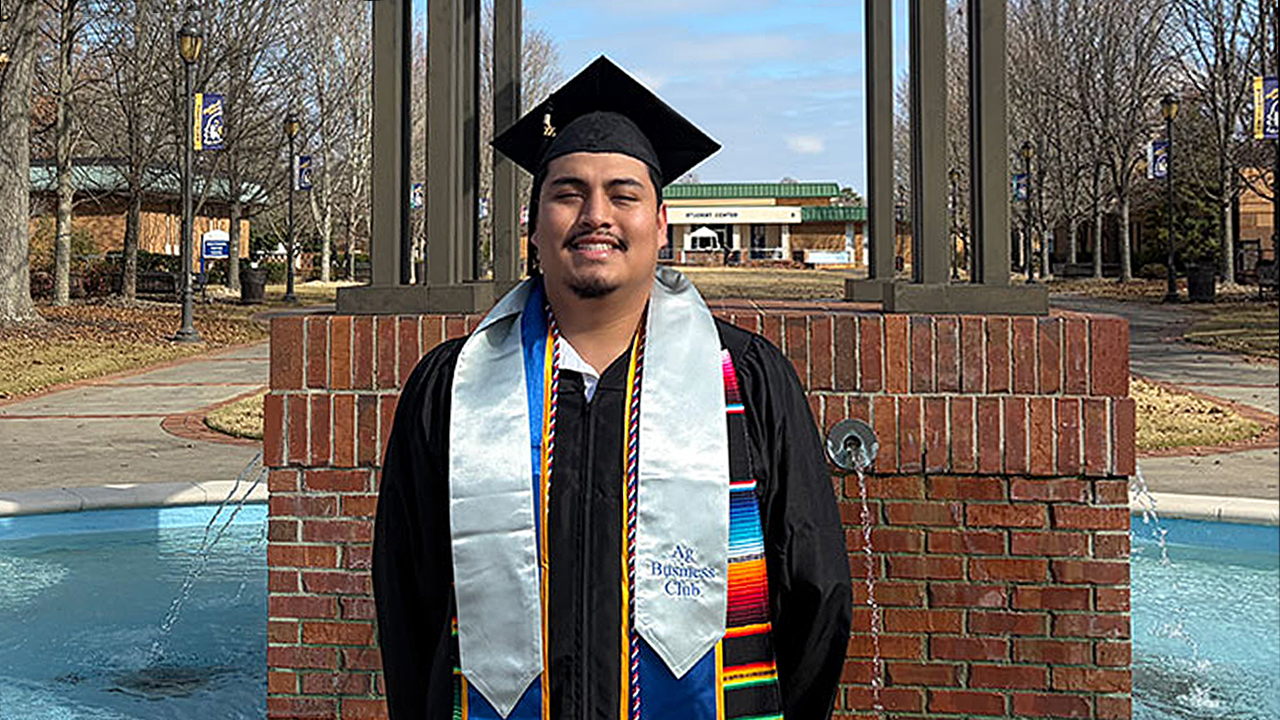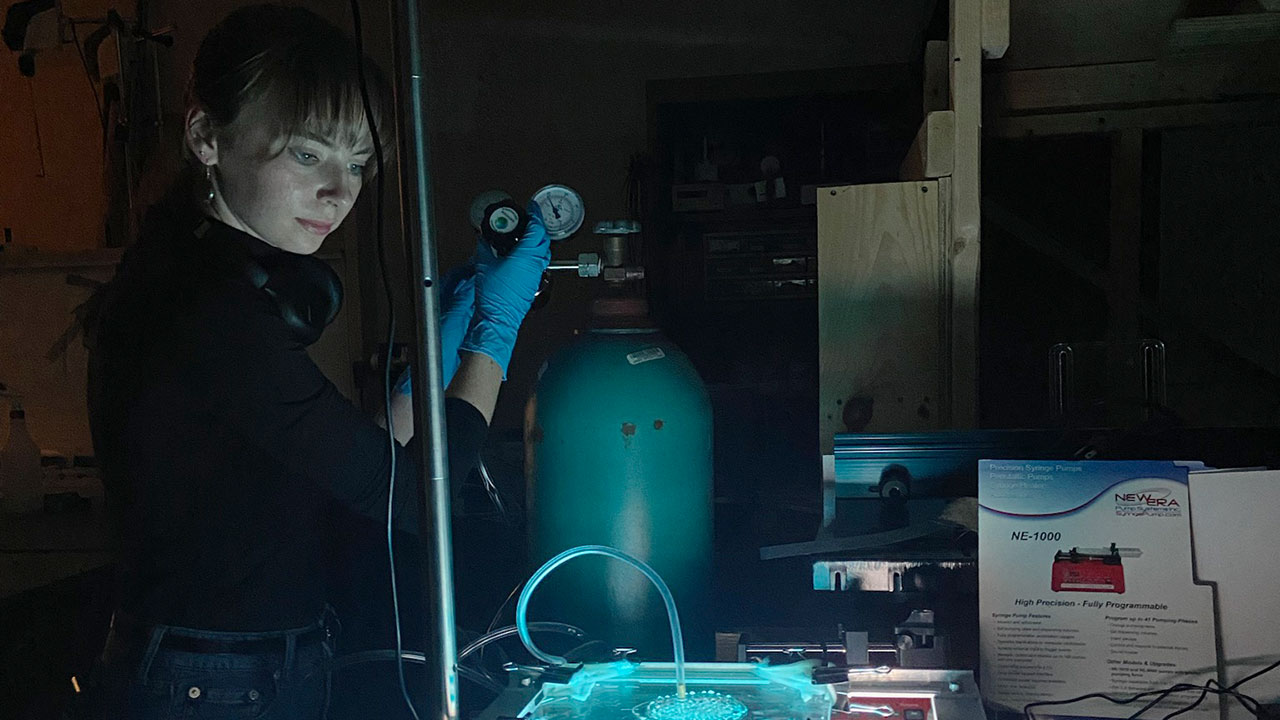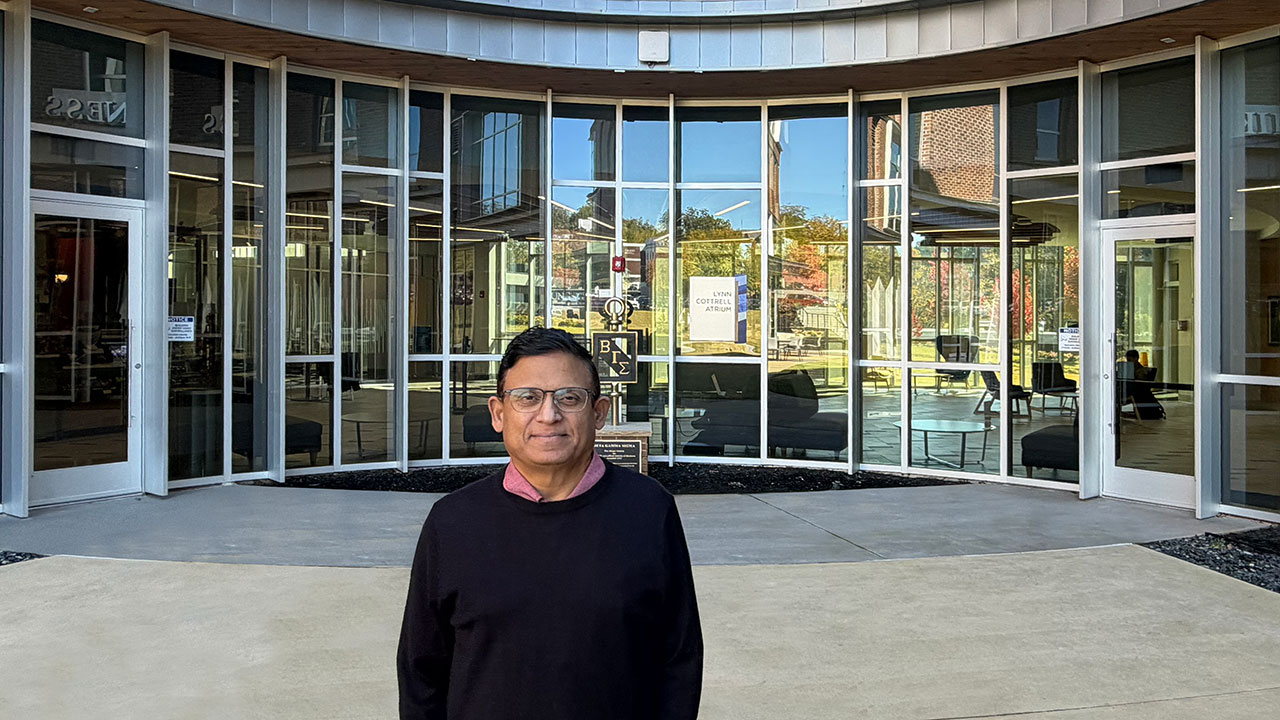Students research fluid dynamics in a new lab

For Dr. Patrick Bunton, light is key in his fluid dynamics research.
"Light is my friend, but light infestation is my enemy," the head of the Department of Physics and Astronomy at the University of North Georgia (UNG) said. "I needed a room that I could make completely dark."
Finding a room to accommodate his dark parameters proved a task for the facilities department, but they solved the issue with rearrangement and construction. The facilities crew built a new room onto the Environmental Leadership Center to house the Water Quality Trend Monitor Lab. That left the water lab's windowless room on the first floor of Rogers Hall on UNG's Dahlonega Campus available.
"I was so thrilled," Bunton said, explaining the lab was across the hall from his office and the darkest room in the building. "It was perfect."
Daniel Stump, a senior pursuing a physics degree, agreed.
"I think the space is great compared to what we used to have," the 22-year-old from Athens, Georgia, said. "Our biggest lab space is down the hall, and we couldn't block out light. This is a good space to work in."
Stump and Gavin Thomas, a summer 2021 UNG graduate, spent the summer setting up the equipment in the newly refurbished and repurposed lab. It is outfitted with high-quality glass, lighting, and digital camera equipment. Then the pair conducted tests for their research projects.

Bunton explained fluid dynamics is an important research tool, because it impacts many facets of life.
"If you see smoke rising steadily in a plume, then it goes awry, that is an instance of fluid dynamics," he said. "We want to discover why it changed from smooth to turbulent."
Understanding this concept is fundamental for students pursuing degrees in physics and engineering. Bunton said most students and professionals that he works with are mechanical engineers, because of fluid dynamics' practical applications.
"All climate change is affected by fluid dynamics, and aerospace engineering is about fluid dynamics," he said.
The fluid dynamics lab gives students hands-on experience replicating experiments, conducting new ones and building their research skills.
Thomas, who earned a physics degree, said he learned several practical applications, which he knows he will use in his future career.
"I learned to use a drill press. I learned to cut glass. And I hadn't worked with apertures, achromatic lenses, or a machine vision camera before this," the 22-year-old from Fort Wayne, Indiana, said. "This type of research and learning how to work in a lab will help prepare me for working in other labs."
Bunton said it also teaches students to be problem-solvers.
"During the teaching process, you have to tell students what to do," Bunton said. "But once they get enough experience, you tell them what the issue and problem are. Then they figure out what to do and how to solve it."



